Discover 8 hidden attractions, cool sights, and unusual things to do in Dawson City (Canada). Don't miss out on these must-see attractions: Diamond Tooth Gertie's Gambling Hall, St. Paul's Anglican Church, and Tr'ochëk. Also, be sure to include Dredge No. 4 in your itinerary.
Below, you can find the list of the most amazing places you should visit in Dawson City (Yukon).
Table of Contents
Diamond Tooth Gertie's Gambling Hall

Casino in Dawson City, Canada. Diamond Tooth Gertie's Gambling Hall is a casino in Dawson City, Yukon, Canada. It was first opened in 1971 by the Klondike Visitors Association, making it Canada's oldest casino. Gertie's, as it is colloquially known, as well as most of Dawson City is reminiscent of the area's Klondike Gold Rush history. Patrons are treated to a daily vaudeville show inspired by one of Dawson's most famous dance hall stars from the Gold Rush era, Gertie Lovejoy, who had a diamond between her two front teeth.[1]
Address: Dawson City, corner of Fourth Avenue and Queen Street, Dawson City, Yukon Y0B 1G0
St. Paul's Anglican Church
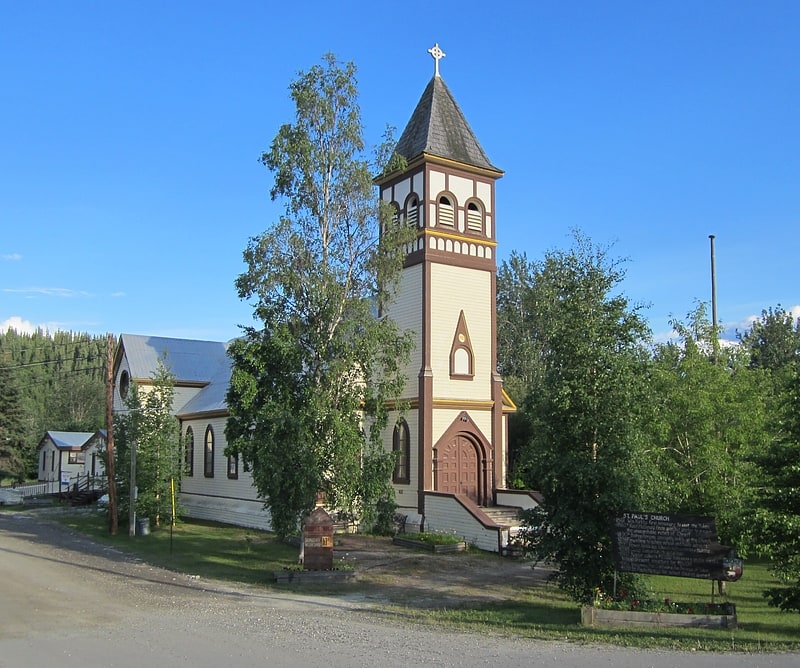
Church building in Dawson City, Canada. St. Paul's Anglican Church is a historic Carpenter Gothic style Anglican church building located on the corner of Front and Church streets in Dawson City, Yukon, Canada. Built of wood in 1902, it once served as the cathedral of the Anglican Diocese of Yukon until the diocesan see was moved to Whitehorse in 1953. Its steep pitched roof, its pointed arch entry through its belfry tower and its lancet windows are typical of Carpenter Gothic churches. St. Paul's was designated a National Historic Site of Canada on June 1, 1989.
St. Paul's is still an active parish in the Diocese of Yukon. The Ven. Laurie Munro is its incumbent priest, while the Rev. Percy Henry is its deacon. Lay Ministers are Mabel Henry, Shirley Pennell and Betty Davidson.[2]
Tr'ochëk
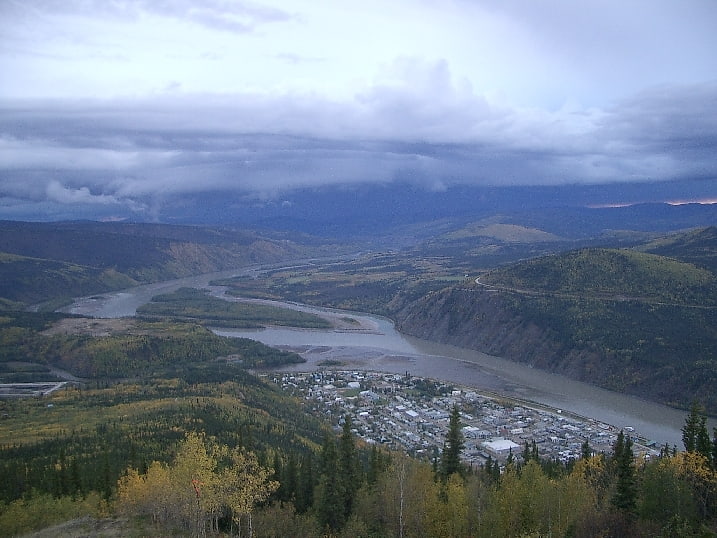
Tr'ochëk is the site of a traditional Hän fishing camp at the confluence of the Klondike River and Yukon River. The site is owned and managed by the Tr’ondëk Hwëch’in First Nation, and is operated by the First Nation's Department of Heritage.
In the late 19th century Tr'ochëk was the camp of Chief Isaac, the leader of the Tr'ondëk Hwëch'in during the Klondike Gold Rush. The Tr'onëek people used this site primarily in the summer, hunting moose in the flats across the Klondike and fishing for salmon during their migration up the Yukon.
Tr'ochëk lies on the upstream flat, an alluvial deposition of the Klondike River, at the river confluence. Dawson City is directly north of the site, just across the Klondike.
The river flat has a mixture of poplar trees, alder and willow bushes, with open grassy meadows. The steep hillside behind the site is covered with vegetation typical of a northern exposure boreal forest - thick moss, spruce, and small birch groves. On the bench above the flat, mining activity has stripped away both vegetation and soil, leaving a fringe of the original spruce forest along the edge of the river bluffs.
The gold rush was a period of great disruption for the Tr'ondëk Hwëch'in. Thousands of stampeders overwhelmed them at their summer camp. To avoid the worst excesses of this time, the Tr'ondëk Hwëch'in made arrangements, with the assistance of the Anglican Church and the Royal Canadian Mounted Police, to move a few kilometres downriver to a site known as Moosehide.
After the Tr'ondëk Hän relocation to Moosehide (64°05′40″N 139°26′12″W), Tr'ochëk was used by the non-native newcomers for a series of urban and industrial activities. Several bridges connected the site to Dawson City and until the 1910s, Klondike City, as the site became known, remained a fairly active part of the Dawson urban area. Later, as the newcomer population dwindled, the site was used for a time for market gardening. First Nation people began resettling the site in the 1950s.
In the early 1990s mining activity on the site instigated a lawsuit by the Tr'ondëk Hwëch'in challenging Canada's right to issue mining claims on unsurrendered Indian lands. The Tr'ondëk Hwëch'in reaffirmed their ownership of the site in their land claim final agreement in 1998, and designated it as a heritage site. It was subsequently designated as a National Historic Site of Canada on July 19, 2002.[3]
Dredge No. 4
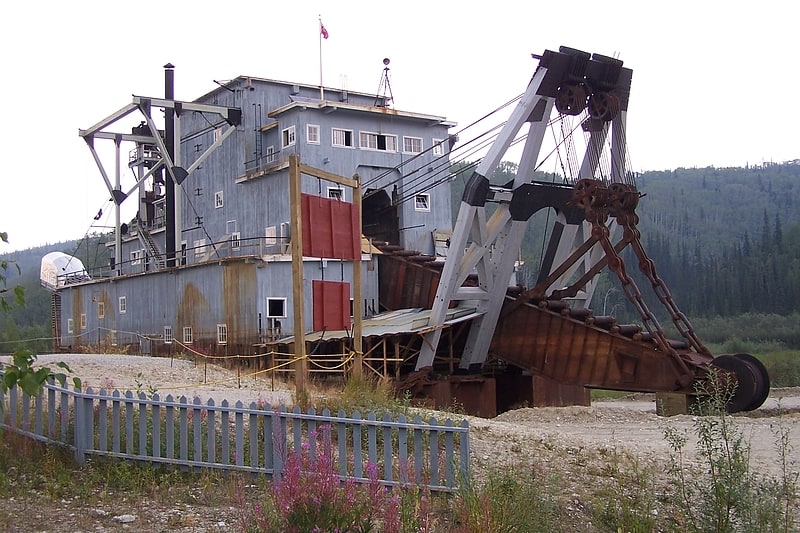
Dredge No. 4 is a wooden-hulled bucketline sluice dredge that mined placer gold on the Yukon River from 1913 until 1959. It is now located along Bonanza Creek Road 13 kilometres south of the Klondike Highway near Dawson City, Yukon, where it is preserved as one of the National Historic Sites of Canada. It is the largest wooden-hulled dredge in North America.
With its 72 large buckets, the dredge excavated gravel at the rate of 22 buckets per minute, processing 18,000 cubic yards (14,000 m3) of material per day. It was in use from late April or early May until late November each season, and sometimes throughout winter. During its operational lifetime, it captured nine tons of gold.[4]
Address: Bonanza Creek Road, Dawson City
S.S. Keno
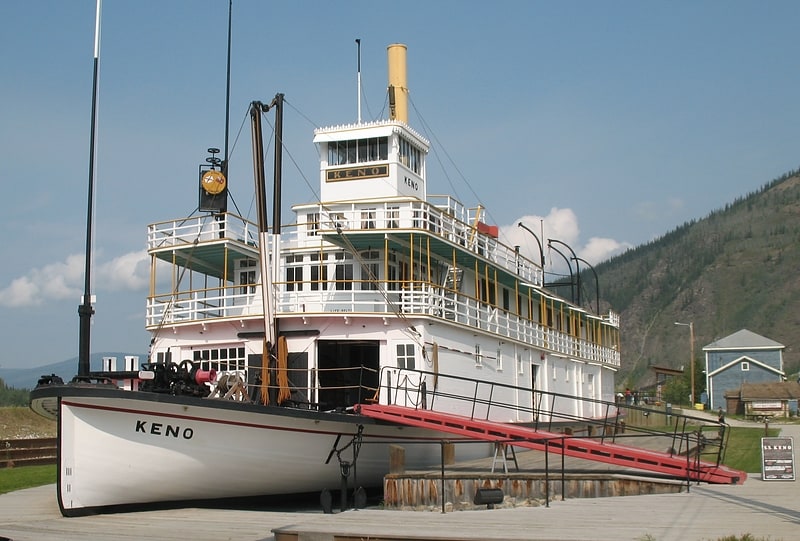
Vessel. The SS Keno is a preserved historic sternwheel paddle steamer and National Historic Site of Canada. The SS Keno is berthed in a dry dock on the waterfront of the Yukon River in Dawson City, Yukon, Canada.
The vessel was constructed in 1922, in Whitehorse, by the British Yukon Navigation Company, a subsidiary of the White Pass and Yukon Route railway company. For most of its career it transported silver, zinc and lead ore down the Stewart River from mines in the Mayo district to the confluence of the Yukon and Stewart rivers at Stewart City. It was retired from commercial service in 1951 due to the extension and improvement of the Klondike Highway in the years after World War II.
Following its withdrawal from service the SS Keno was laid up at the BYN Co. shipyard in Whitehorse, before being selected for preservation and donated by the company to the Canadian Government in 1959. On 25 August 1960 the Keno left Whitehorse to sail downstream to Dawson City. In doing so she became the last of the Yukon's sternwheeler steamers to navigate the Yukon River under her own power. Three days later she arrived in Dawson and was subsequently installed as a tourist attraction and a permanent memorial to the approximately 250 sternwheelers that provided a vital transport service on the Yukon River and its tributaries during the latter half of the 19th and first half of the 20th centuries.[5]
Address: Front Street, Y0B 1G0 Dawson City
Jack London Cabin

Historical place, History museum, Museum
Address: Eighth Ave. and Firth Street, Y0B 1G0 Dawson City
Dawson City Museum
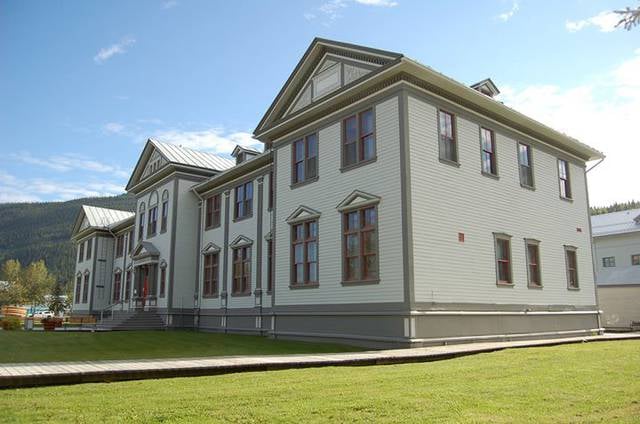
Specialty museum, Museum
Address: 5th Avenue and Church Street, Dawson City
Yukon School of Visual Arts
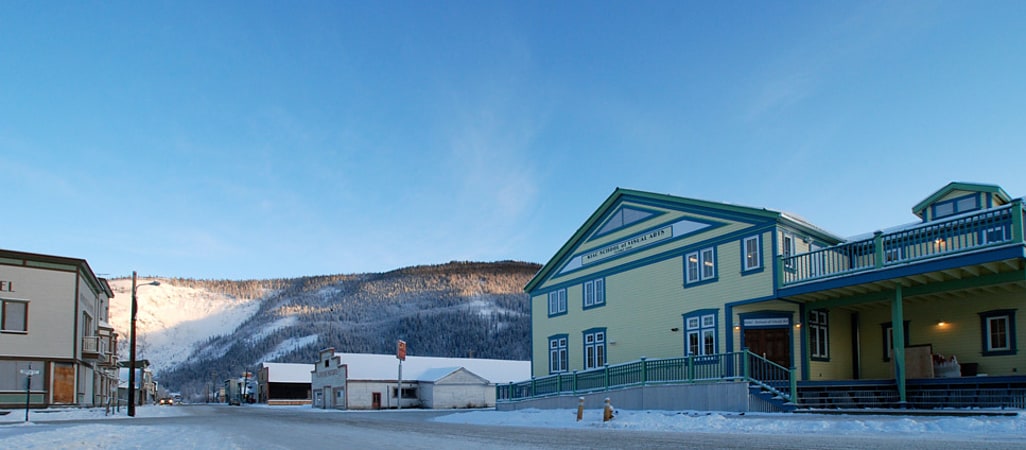
College in Dawson City, Canada. The Yukon School of Visual Arts is Canada's most northerly post-secondary fine arts school, and it receives its accreditation through the Applied Arts Division of Yukon College. SOVA is located within the traditional territory of the Tr'ondëk Hwëch'in First Nation in Dawson City, Yukon Territory, Canada. SOVA offers a Foundation Year Program, which is the equivalent of the first year of a Bachelor of Fine Arts degree. The school offers an experimental, integrated curriculum that is studio-based with liberal arts courses. Successful students continue their degrees at their choice of five partnering art schools across Canada, including the Ontario College of Art and Design in Toronto, the Emily Carr Institute of Art and Design in Vancouver, the Alberta College of Art and Design in Calgary, Mount Allison University in Sackville, NB and the Nova Scotia College of Art and Design University in Halifax.
YSOVA is a partnership between the Dawson City Arts Society, Yukon University and Tr'ondek Hwech'in. Each founding organisation has equal representation on the governing council. Yukon School of Visual Arts changed its name from KIAC School of Visual Arts in the Fall of 2010 to avoid confusion between the school and the community arts organisation KIAC.[6]